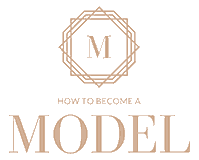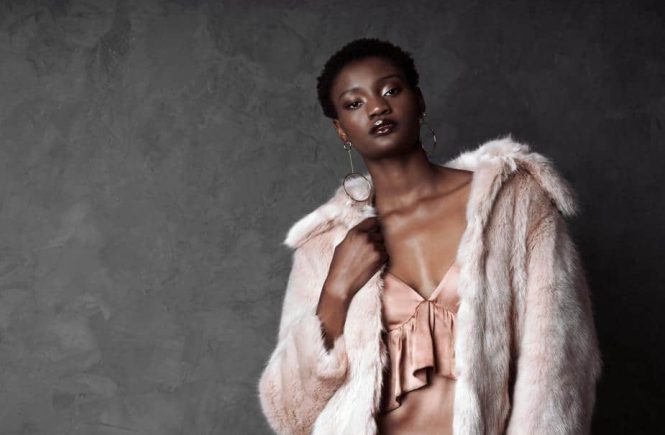As a model, your portfolio represents your livelihood. Whether you’re freelance or represented by an agency, a portfolio that showcases your best looks can help you advance your career and book the next big job – and regardless of what kind of modelling experience you have, selecting the right images that highlight your strengths as a professional proves to anyone hiring that you’re serious about your modelling career.
When you’re first starting out as a model, it’s not required that you have professional photos, simple snapshots are all you need to find out if an agency is interested in you. These snapshots can be taken on an iPhone in high quality or with a friend holding a digital camera (or even by yourself with your camera on a timer!)
But, if an agency is interested in you but is unsure if they’re ready to sign you to their books, the agency may request that you build your portfolio and work on developing your look. For new models, this can be a confusing time especially if they are unsure on the best way to go about building their portfolio in a way that highlights their best assets so they’re more attractive to agencies.
So what do agencies look for in your snapshots?
Agencies will be looking to see some specific shots in your portfolio in the beginning of your modelling career – this will help them to best see your potential and book you for the right jobs that will earn you the most and allow you to best build up your portfolio for future opportunities. Agencies specifically look for shots that show your versatility as a model and your ability to express yourself. They also like to see how well a model can tell a story or capture an emotion in their photos… storytelling is powerful!
Here are some essential shots you’ll need in your portfolio:
A clean headshot, or a “beauty shot”
A beauty shot (for fashion & editorial models) or a clean head shot (for commercial models) is the first photo that you should be concentrating on for building your portfolio. A beauty shot is a colour photo of the model’s face, generally from the shoulders up, and its purpose is to show the model in their most natural state. This allows the agency and/or client to see exactly how the model looks without heavy makeup or styling so that they can best cast the model. In a clean headshot or beauty shot, you should aim to keep hairstyling, makeup and jewellery to an absolute minimum and if you’re an editorial model, you usually will not smile for a beauty shot.
A commercial headshot can be a little more relaxed than a beauty shot – it can be either black and white or colour, and can be shot anywhere from the waist up. Commercial models may choose to be smiling or not in their headshots (depending on the sort of jobs that they hope to book and the look that they want to portray).
A beauty shot or headshot should always be the first photo in your model portfolio.
A full length body shot
The second photo in a model’s portfolio should be a full length body shot that allows the client or agency to see your proportions and body type. Clothing should be form fitting and simple, this is why you’ll see many models use a full length body shot featuring them in skinny jeans and a tank top. The model should not be wearing long dresses, skirts or excessive layering that can distract/busy the photo and cover up what agencies and clients will be wanting to see!
Swimsuit shot
In Australia, if you’re over 16 years of age and feel comfortable taking a swimsuit shot), then this should also be included in your modelling portfolio for versatility (even if you’re not aspiring to be a swimsuit or lingerie model). Versatility is very important!
When doing a swimsuit shot, always consider the message that you’re sending – if you’re aspiring to make a living from swimsuit and/or lingerie modelling, you might take a more playful or sexy photo however if you’re an aspiring commercial model, simply showing yourself in a swimsuit looking fun and happy is the right tone to portray. Budding editorial models might use their swimsuit look to portray something moody and high-fashion.
Editorial fashion shot (for fashion models)
In the middle of your portfolio, don’t be afraid to get creative and have some fun! This is also where you can add some tearsheets if you have them. In fashion and editorial photos in your portfolio, express yourself – show the agents and clients your ability to move and do something interesting. Agents love to see motion shots!
Commercial shot (for commercial models)
Commercial models also need to show the agents and clients their range and ability to express themselves… in many ways, commercial modelling is very similar to acting and as such, some basic training in acting is recommended. Clients and agents will want to see a variety of emotions that you can depict so as a commercial model, you may wish to have multiple commercial shots that show you laughing, crying, surprised etc.
A smiling shot
If you don’t already have a smiling shot (as a commercial headshot or somewhere in the middle of your portfolio), then make sure to also add a good smiling head shot! Agents and clients will be looking for your beauty in your smile and teeth – but don’t worry if you don’t have perfect teeth! In fact, many supermodels are revered for their gap toothed smiles or overbites, which are now considered sexy! In one episode of America’s Next Top Model, host Tyra Banks famously sent one of her aspiring models to the dentist to have a small gap in her teeth made even wider… this was deemed as part of her signature look!
A strong closing shot
As a rule of thumb, always end your portfolio with one of your strongest photos. A good pick is another great beauty shot or headshot with a slight variation to your opening shot. Agents and clients will notoriously remember the first and last shot in a model’s portfolio, so make sure you go out on a high note and leave a killer impression!
When it comes to your model portfolio photos, quality matters more than quantity! If you’ve already had some experience with campaigns and jobs, be sure to include this too.
In your portfolio, keeping tight control of its content is a must. Understand your strengths as well as your weaknesses and show a potential client or agent that you can find your best angles.
In your portfolio, you’ll want to also include:
- Your statistics (height, weight, measurements, clothing sizes hair and eye colour)
- Any notable markings or features such as tattoos or scars
- Relevant skills that you have (e.g. maybe you can play a sport or an instrument)
- The type of work you’re willing to do
It’s important to know that your reputation is also as important as having an impressive portfolio… be considerate of photographer, client and agencies time, be friendly and polite and always go above and beyond to make a good first impression. It’s what people will remember, after all!
Also, it goes without saying, but be absolutely truthful in listing your statistics… it’s important to be honest so you can be cast for the right jobs (and plus, it’s not a good look if the model that turns up isn’t exactly the model that the agents were expecting based on the portfolio description).
If you do want to hire a professional photographer to help you build your portfolio, consider the following tips:
- A good photographer isn’t cheap (and a cheap photographer usually isn’t good!).
- “Time for” or “TF” modelling sessions are where the photographer provides their time for free in exchange for also using the photos in their portfolio – this is usually only offered by very inexperienced photographers (and thus, their quality may not be what you’re looking for – do your research carefully!).
- Have a goal in mind that you’d like to achieve with your portfolio… what sort of model do you want to be? What jobs do you want to book? How would you like to be perceived?
- Discuss your image ideas with your photographer upfront before the day of the shoot to ensure you’re not wasting any time or not getting what you’re after.
- Know what’s included in the shoot price – are you required to provide your own hair and makeup? If you’re decent at styling your own hair and makeup yourself, you can save some money by not booking a HMUA & shoot package.
- How long will the session be and how many outfit changes will be included? Will retouching be included in the price? Has the location been scouted (if applicable)? These are all questions you need to be asking your photographer.
Finally, remember that a model’s portfolio is a work in progress and should tell a story about who the model is, their personal brand and the direction their career is taking. Shoot with as many types of photos with as many photographers as you can… even if not every shoot is “portfolio worthy”, every time you shoot you’ll improve your skills and that will lead to even better shoots in the future.

